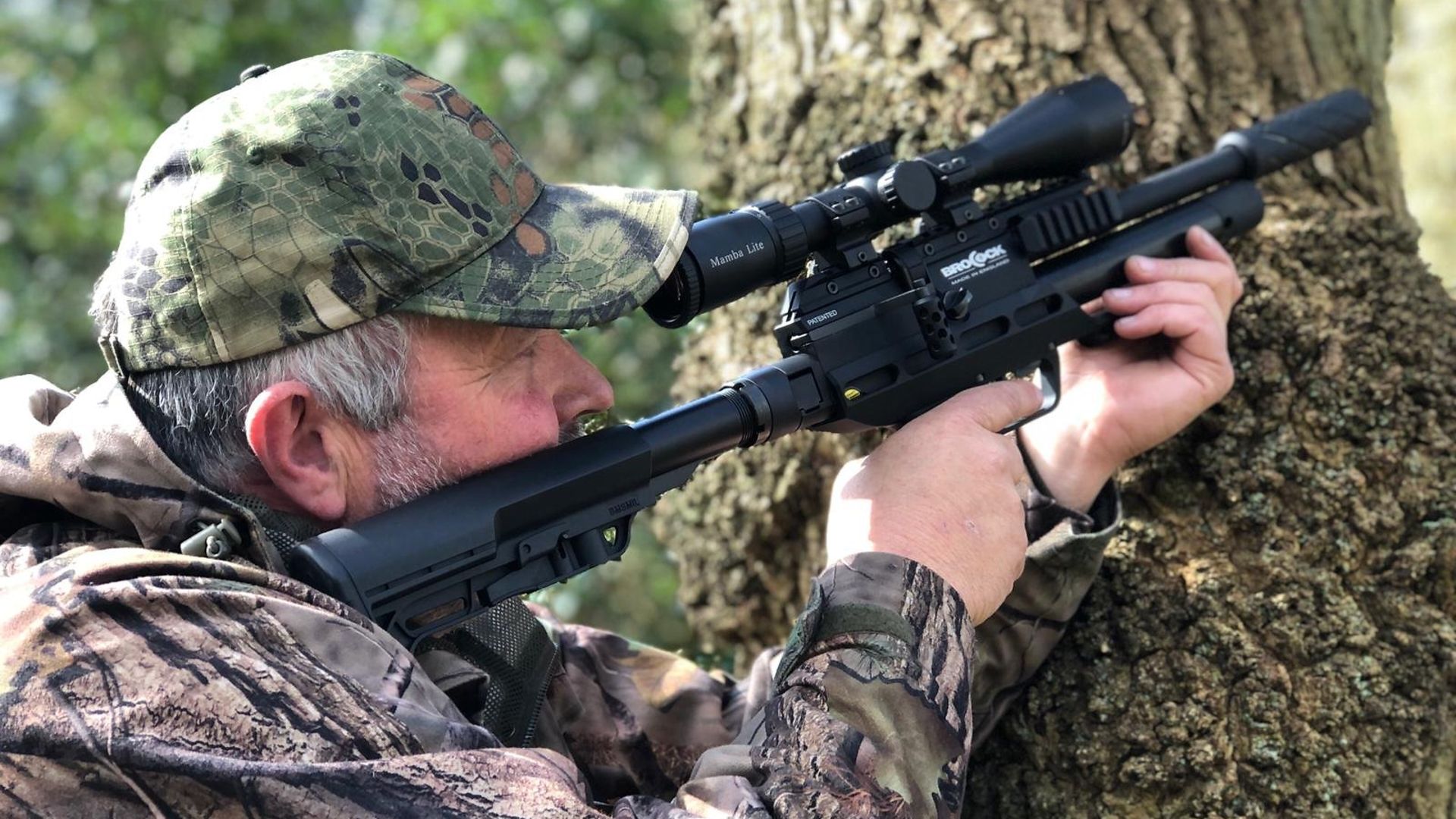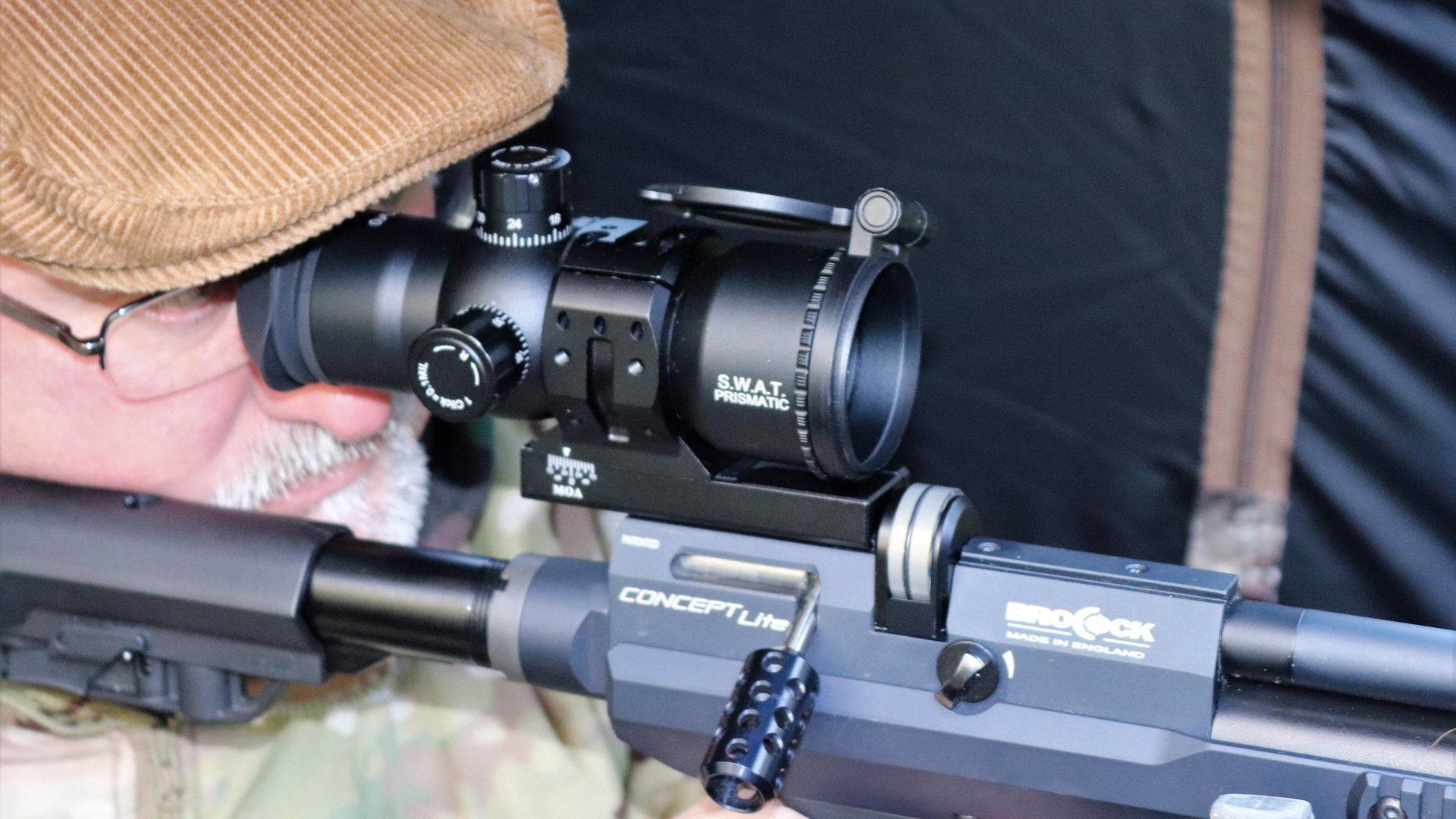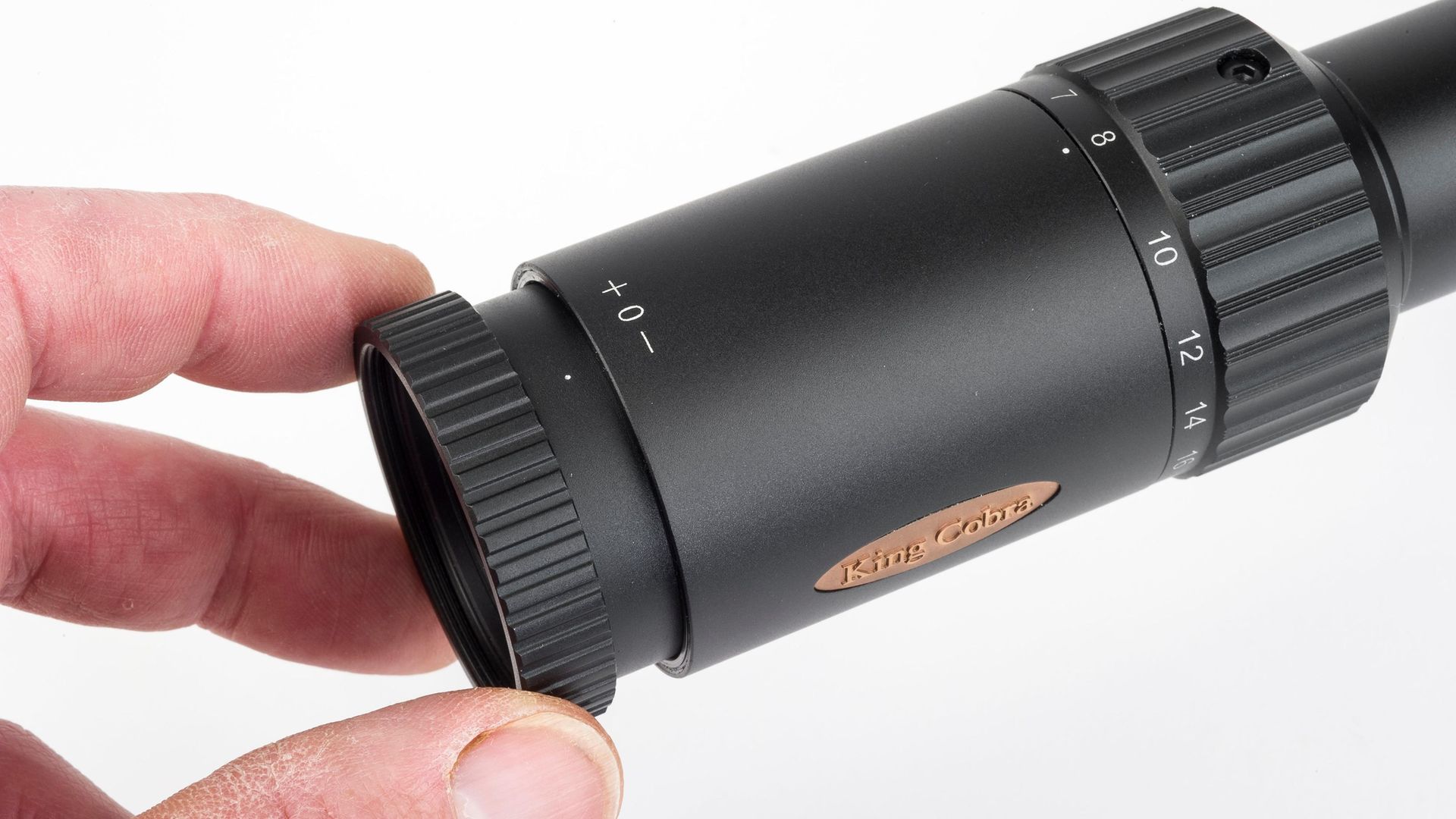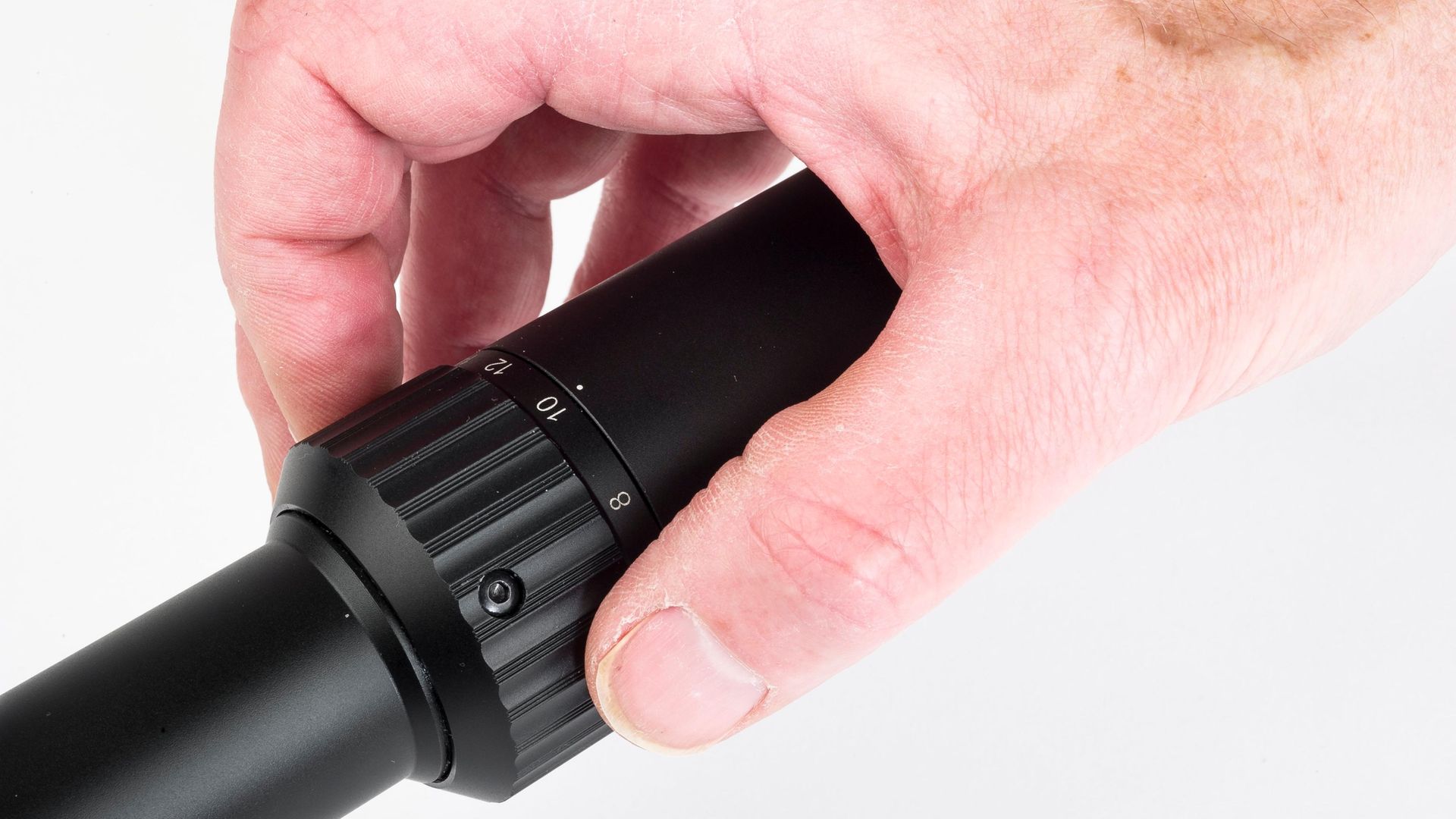In part 1 of his series on the anatomy of a riflescope, Tony Belas focuses on the different elements that make up a scope and what each bit does...
Do you know what you are talking about when it comes to scopes? Do you know your dioptres from your milliradian? Your prismatic from your Galileo? Or are you an expert and it was love at first sight? Regardless, there is stuff to be seen here, but let’s focus on the main features and what they do.
A telescopic sight is a tube packed with a whole lot of lenses, and each of those lenses has a job to do, or they wouldn’t be there. In the main, how a scope works is really nothing other than a clever thing to know, and whilst it’s nice to be clever, it’s far better to appreciate the things the scope and its lenses do that involves the shooter on a practical level, and it’s these that I’m going to zoom in on here. (That’s enough scope puns! – Ed)
 credit: NIGEL E ALLEN
credit: NIGEL E ALLEN
EYE RELIEF
So, starting at the back... there is a space between the back of the scope and your eye, this is called ‘eye relief’ – I thought we should start with something easy. This does vary and it’s important to get the right eye relief for your rifle type.
For example, when fitting a scope to a pistol, you would need a very long eye relief of around 500mm because pistols are shot at arm’s length, so that is where the scope will be.
A recoiling rifle needs a space that is usually set at 80mm so that it doesn’t whack you in the eye when the scope recoils. This applies in our airgun world to spring-piston designs, but not so much – or at all – to the now dominating pre-charged pneumatic.
The third and somewhat lesser known option is a low eye relief scope – sometimes even called ‘zero eye relief’. Here it’s as short as 14mm, about the same as a pair of binoculars.
 credit: NIGEL E ALLEN
credit: NIGEL E ALLEN
FIELD OF VIEW
By bringing the scope back towards you, the next item on our fun-filled list of facts, the 'field of view', is affected, actually enlarged. Imagine looking through a toilet roll at arm’s length, then bring it back to conventional scope distance, and finally, until it touches your eye. The closer it gets, the more you will see. This is the principle of eye relief and its cuddly relationship with Field of View (FOV).
Why do more shooters not use low eye relief scopes? Well, it’s a habit, for one thing; we stick to what we know. Availability is another answer. Most scopes are made for the world firearms market, and those guns can kick like a mule. When faced with a smaller market and with many shooters stuck in their ways, low eye relief scopes can be a harder sell, but if you are willing to adapt and try new things, take a closer look at this type of scope.
 credit: NIGEL E ALLEN
credit: NIGEL E ALLEN
DIOPTRE ADJUSTMENT
Ready to go little further? Me too, so the next item is the focus ring, or perhaps more correctly, the dioptre adjustment. Few of us have perfect eyesight and you won’t need me to tell you that, as we get older, it gets further out of whack, so it’s necessary for the designer to build in some adjustment, not just for seeing the target, but also for seeing the reticle inside the scope.
Originally, this was achieved by the whole eye bell being screwed on the back of the scope, and by increasing or decreasing the length variation to suit your eye’s prescription. Latterly, most scopes have a ‘speed focus’ and this is marked plus or minus. The range of adjustment varies from scope to scope - +/-2 dioptres is more usual, but sometimes it can be as high as +/-4.
If you think back to the last time you went to the opticians, you will know your prescription and will see where you fall in that range. That’s not all of it though. When out shooting, some of us like to be able to see clearly when we’re not looking through the scope, so leave your glasses on – especially if the scope can correct to +2, but your prescription is +4 – it’s never going to look too clear!
 credit: NIGEL E ALLEN
credit: NIGEL E ALLEN
MAGNIFICATION
Moving on, we reach the magnification or zoom ring. If it’s not there, then you have what is called a fixed magnification scope. Once the norm, fixed magnification scopes are now a little rare, with the occasional fixed 10 (described as 10X) being sometimes the darling of HFT shooters. A fixed magnification scope is really about removing variables and a light-sucking lens out of the system, but in the grand scheme of scope things, they are less common now than in the past.
The greater the magnification, the bigger the target will appear, but the less you will see around it because the field of view (FOV again) decreases with magnification. As humans, we have amazing binocular vision, but as you start to look though our metal tube you will see a lot less. It drops alarmingly from a credible 120 degrees to 7 degrees at 100 metres for a 4X, and down to .8 degrees on 24X. This is data from a 30mm tube with a 50mm lens. It gets better and worse depending on the specification, but you get the idea.
PLENTY MORE TO COME
We are nearly halfway, but quite a bit of fun stuff is yet to come. Check in next month and we will cover reticles, turret choices and above all, the darling of all airgunners and something we airgunners most definitely need to understand – parallax.